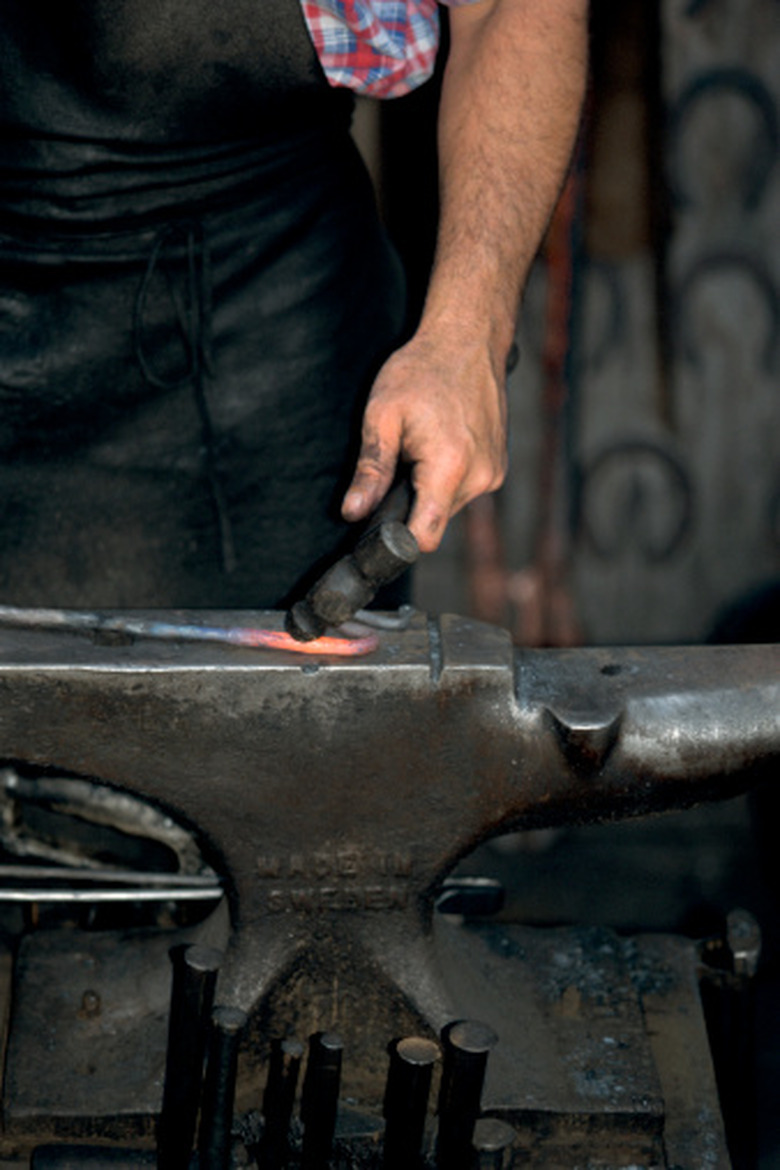The Difference Between Hot And Cold Chisels
A chisel is a metal, cylindrical hand tool with a wedge-shaped blade on one end and a striking surface at the other. Hot and cold chisels originated in the craft of blacksmithing. Cold chisels are now more frequently used in carpentry and masonry to cut and shape metal and masonry elements and can be found in many toolboxes, ready for tasks such as breaking bolts.
Cold Chisel
Cold Chisel
A cold chisel is a metal working chisel with a solid, hardened steel cylindrical shaft about 6 inches long. The tip is shaped to about a 60-degree angle on both sides to form a wedge-shaped point. It is is designed to cut steel and other metals that have either not been heated or have previously cooled down. The chisel is typically used in conjunction with a steel hammer, such as a ball-peen hammer, or 3-pound sledge.
Hot Chisel
Hot Chisel
A hot chisel is exclusively used in blacksmithing. It is used to cut and shape red-hot steel pieces. Since heated steel is many times softer than cold steel, these chisels are not typically hardened or tempered. They are of roughly the same size and shape as cold chisels, but feature a blade that is cut at a 30-degree angle, making them virtually useless for other cutting tasks. The blade of the hot chisel is ground on one face, so that the bottom face of the blade can ride flush against the surface of the anvil.
Cold Chisel Uses
Cold Chisel Uses
Since a cold chisel is made of hardened steel, it is harder than most building materials in common usage. Cold chisels come in many different forms. A wide, cold chisel of hardened steel is commonly known as a brick chisel and can be used to cut masonry, concrete and brick. Many heavy-metal punches are also known as cold chisels, and they are frequently used to chip mortar. Auto mechanics use them to break stubborn parts, and other tradesmen use them when brute, focused force is required.
Other Chisels
Other Chisels
Wood chisels and gouges make up the bulk of other tools commonly known as chisels. These tools feature blades cut at mush finer angles, with razor-like edges. They are made of softer steel, and while excellent for cutting and shaping wood, should not be used on metal or masonry. They will splinter or shatter, sending dangerous shards flying, which can cause serious eye injuries. Misusing these tools will also damage the edges, rendering them virtually useless for woodworking.
